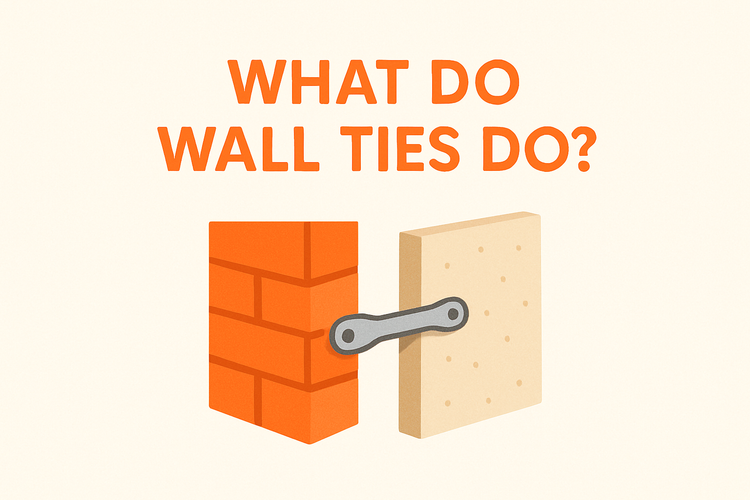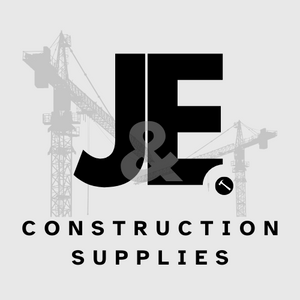What Do Wall Ties Do

Understanding the Purpose of Wall Ties
Wall ties are essential components in cavity wall construction, designed to bind the inner and outer layers of a wall together. These connectors help maintain the structural integrity and prevent separation of masonry walls.
In addition to providing structural support, wall ties also help in the distribution of lateral loads such as wind pressure across the wall’s cavity. The proper selection and installation of wall ties can significantly improve the durability and strength of a building facade. Whether used in new builds or for reinforcing older walls, these elements are indispensable for safe and long-lasting structures.
Wall ties must comply with relevant building standards and be chosen based on factors such as wall width, exposure to weather, and the type of masonry involved. Choosing the right product ensures optimal performance and helps avoid issues like corrosion or thermal bridging.
Types of Wall Ties and Their Applications
There are different types of wall ties designed to suit various structural and environmental needs. Each type has specific advantages and installation requirements that address a range of building applications.
Common wall tie types include cavity wall ties, frame cramps, and wire ties. Cavity wall ties are most often used in residential and commercial buildings to link two leaves of masonry separated by a partial gap. Frame cramps are ideal for securing masonry to a structural frame, offering flexibility in dynamic building settings.
Understanding the best type of wall tie for your project is crucial. For example, buildings in high wind zones benefit from robust ties that can handle lateral force — a feature shared by some high wind ties & timber connectors. Selecting the right tie not only supports structural integrity but also improves energy efficiency and safety.
Each wall tie's material choice—whether stainless steel, galvanized steel, or others—also plays an important role in its performance, influencing corrosion resistance and structural lifespan.
Wall Tie Installation and Best Practices
Correct installation of wall ties is key to their effectiveness. Improper spacing or orientation of wall ties can compromise the strength of the entire wall assembly.
One of the best practices involves placing wall ties at regular horizontal and vertical intervals, often dictated by building regulations. Typically, they are installed every 450 mm vertically and 900 mm horizontally, though adjustments are made for structural stress points like doors and windows.
It’s also important to ensure that ties slope slightly downwards towards the outer wall leaf. This helps prevent moisture from transferring into the inner wall, promoting better moisture management within the cavity. In cases of timber frame construction, specially designed timber frame connectors can be used in place of traditional ties for improved performance.
Installers need to pay careful attention to local codes and manufacturers’ guidelines during the placement of wall ties. Proper embedment in mortar and secure bonding are vital to the tie's durability over time.
Issues Caused by Failing or Inadequate Wall Ties
Failing or corroded wall ties can pose serious structural threats. Early detection and replacement can prevent costly repairs and ensure the continued safety of a building.
One common issue is tie corrosion, particularly in structures built before stainless steel ties became standard. As wall ties rust, they expand, causing horizontal cracking in the mortar and compromising the wall’s stability. In extreme cases, this can lead to partial or total wall collapse.
A lack of sufficient ties or poor placement can also result in leaning or bulging walls, particularly in areas exposed to strong lateral forces. Using additional supports like angle brackets in such areas can supplement structural bonding and improve resistance to separation.
Routine inspections and maintenance programs are advisable—especially for older properties—to catch early signs of wall tie degradation. In cases of failure, retrofitting with new ties can restore structural dependability effectively.
Modern Innovations in Masonry Connectors
Recent developments in construction materials have led to the evolution of more effective and corrosion-resistant masonry connectors. These advancements are redefining wall tie performance and longevity.
Contemporary wall ties are now made from high-grade stainless steel or composite materials with excellent resistance to the elements. This enhances their ability to perform long-term with minimal maintenance. Some are even designed to reduce thermal bridging, contributing to a building’s energy efficiency.
The role of advanced connectors has expanded to meet the demands of eco-conscious building designs. Integration with systems like masonry connectors and wall ties ensures that even the smallest components contribute to the overall sustainability and efficiency of a structure.
In combination with modern fixing hardware like screws and nails engineered for high performance, today’s wall connecting systems are tailored for even the most demanding projects. These innovations signal a future of safer, smarter masonry construction.
